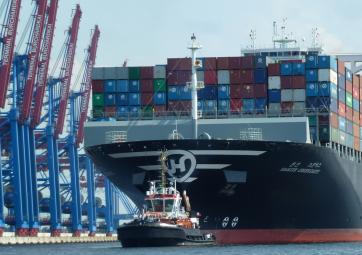
When choosing express delivery services in Australia, the following key points should be noted to ensure smooth logistics:
I. Customs Regulations and Prohibited Items
Understand the embargo list: The Australian customs prohibits the transportation of drugs, weapons, rare animals and plants, and other items. Before sending, it is necessary to confirm whether the goods are in compliance to avoid detention or fines.
Sensitive goods handling: Food, medicine, cosmetics, etc. must comply with Australian standards (such as TGA certification, ingredient descriptions), and the transportation plan should be confirmed with the logistics provider in advance.
Accuracy of declared value: Declared value below 1,000 Australian dollars is usually duty-free, but it must be declared truthfully to avoid underreporting resulting in refiling or fines.
Ii. Costs and Transparency
Cost composition: International freight charges, customs clearance fees, customs duties, fuel surcharges, etc. may be calculated separately. It is preferred to choose the "double clearance and tax inclusive" service to avoid hidden fees.
Billing method: For air freight, the larger value of the volumetric weight and the actual weight is taken (volumetric weight = length × width × height /6000). For sea freight, the billing is based on cubic meters or tons, and the choice should be made according to the characteristics of the goods.
Value-added service costs: Services such as photo inspection, insurance, and return and label replacement may be subject to additional charges. It is necessary to assess their necessity based on your needs.
Iii. Timeliness and Mode of Transportation
Timeliness matching: Air freight dedicated lines are suitable for urgent goods (5-10 days), while sea freight dedicated lines are suitable for large quantities of low-timeliness goods (20-30 days).
Transportation stability: Choose a logistics provider that has stable cooperation with airlines or shipping companies to avoid delays in flight/shipping schedules affecting the delivery time.
Last-mile delivery capability: Confirm the cooperation between logistics providers and local distribution networks in Australia (such as Australia Post, Toll) to ensure delivery in remote areas.
Iv. Packaging and Cargo Safety
Packaging standards: Fragile items should be reinforced in packaging. Liquid items should be sealed to prevent leakage. The outer box should be marked with "FRAGILE" and the recipient's information.
Insurance purchase: It is recommended to purchase transportation insurance for valuable items to reduce the risk of loss or damage.
Special cargo handling: Electrical products must comply with the UN38.3 standard. For oversized and overweight goods, the transportation capacity of the logistics provider must be confirmed in advance.
V. Service and After-sales
Full-process tracking: Choose a logistics provider that offers real-time logistics trajectory query to facilitate the tracking of goods dynamics.
Customs clearance capability: Give priority to choosing logistics providers with professional customs clearance teams to reduce inspection risks and customs clearance time.
After-sales guarantee: Confirm the compensation policies of the logistics provider (such as the compensation standards for lost or damaged goods) and the response speed of customer service.
Six. User Demand Matching
E-commerce sellers: Pay attention to timeliness, customs clearance capabilities and return and label replacement services, and choose logistics providers that support bulk shipping and FBA warehousing.
Individual users: Emphasize price transparency and free warehousing services, and choose logistics providers that support small item consolidation.
Special cargo requirements: Select a logistics provider with experience in transporting sensitive goods to ensure compliance and transportation safety.

